Related Research Articles
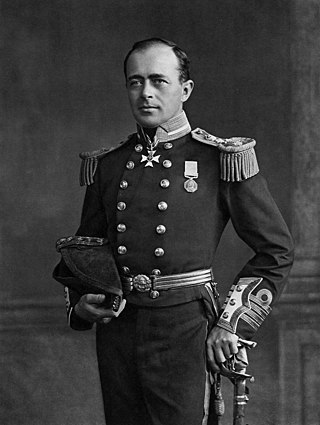
Captain Robert Falcon Scott was a British Royal Navy officer and explorer who led two expeditions to the Antarctic regions: the Discovery expedition of 1901–04 and the Terra Nova expedition of 1910–13.

Edward Adrian Wilson was an English polar explorer, ornithologist, natural historian, physician and artist.
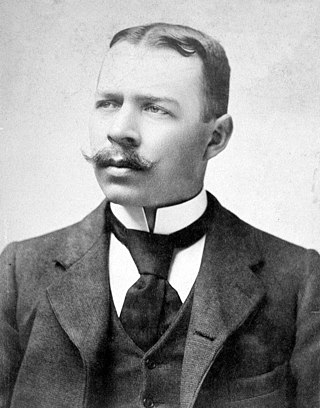
Carsten Egeberg Borchgrevink was a Norwegian polar explorer and a pioneer of Antarctic travel. He inspired Sir Robert Falcon Scott, Sir Ernest Shackleton, Roald Amundsen, and others associated with the Heroic Age of Antarctic Exploration.

Petty Officer Edgar Evans was a Royal Navy petty officer and member of the "Polar Party" in Robert Falcon Scott's ill-fated Terra Nova Expedition to the South Pole in 1911–1912. This group of five men, personally selected for the final expedition push, attained the Pole on 17 January 1912. The party perished as they attempted to return to the base camp.
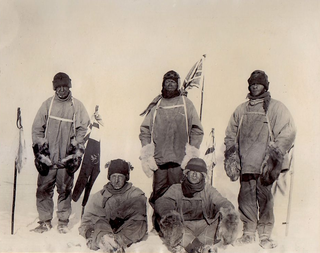
Henry Robertson Bowers was one of Robert Falcon Scott's polar party on the ill-fated Terra Nova expedition of 1910–1913, all of whom died during their return from the South Pole.

Admiral Edward Ratcliffe Garth Russell Evans, 1st Baron Mountevans, was a Royal Navy officer and Antarctic explorer.

The DiscoveryExpedition of 1901–1904, known officially as the British National Antarctic Expedition, was the first official British exploration of the Antarctic regions since the voyage of James Clark Ross sixty years earlier (1839–1843). Organized on a large scale under a joint committee of the Royal Society and the Royal Geographical Society (RGS), the new expedition carried out scientific research and geographical exploration in what was then largely an untouched continent. It launched the Antarctic careers of many who would become leading figures in the Heroic Age of Antarctic Exploration, including Robert Falcon Scott who led the expedition, Ernest Shackleton, Edward Wilson, Frank Wild, Tom Crean and William Lashly.

The NimrodExpedition of 1907–1909, otherwise known as the British Antarctic Expedition, was the first of three successful expeditions to the Antarctic led by Ernest Shackleton and his second expedition to the Antarctic. Its main target, among a range of geographical and scientific objectives, was to be first to the South Pole. This was not attained, but the expedition's southern march reached a Farthest South latitude of 88° 23' S, just 97.5 nautical miles from the pole. This was by far the longest southern polar journey to that date and a record convergence on either Pole. A separate group led by Welsh Australian geology professor Edgeworth David reached the estimated location of the South Magnetic Pole, and the expedition also achieved the first ascent of Mount Erebus, Antarctica's second highest volcano.

The Terra NovaExpedition, officially the British Antarctic Expedition, was an expedition to Antarctica which took place between 1910 and 1913. Led by Captain Robert Falcon Scott, the expedition had various scientific and geographical objectives. Scott wished to continue the scientific work that he had begun when leading the Discovery Expedition from 1901 to 1904, and wanted to be the first to reach the geographic South Pole.
Manhauling or man-hauling is the pulling forward of sledges, trucks or other load-carrying vehicles by human power unaided by animals or machines. The term is used primarily in connection with travel over snow and ice, and was common during Arctic and Antarctic expeditions before the days of modern motorised traction.
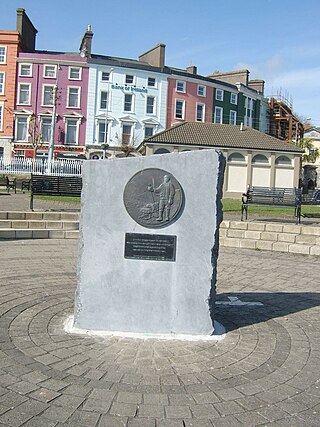
Robert Forde was an Antarctic explorer and member of the Terra Nova Expedition under Captain Robert Falcon Scott from 1910–1912.

The first ever expedition to reach the Geographic South Pole was led by the Norwegian explorer Roald Amundsen. He and four others arrived at the pole on 14 December 1911, five weeks ahead of a British party led by Robert Falcon Scott as part of the Terra Nova Expedition. Amundsen and his team returned safely to their base, and later heard that Scott and his four companions had died on their return journey.

Farthest South refers to the most southerly latitude reached by explorers before the first successful expedition to the South Pole in 1911.

Between December 1911 and January 1912, both Roald Amundsen and Robert Falcon Scott reached the South Pole within five weeks of each other. But while Scott and his four companions died on the return journey, Amundsen's party managed to reach the geographic south pole first and subsequently return to their base camp at Framheim without loss of human life, suggesting that they were better prepared for the expedition. The contrasting fates of the two teams seeking the same prize at the same time invites comparison.

The Southern CrossExpedition, otherwise known as the British Antarctic Expedition, 1898–1900, was the first British venture of the Heroic Age of Antarctic Exploration, and the forerunner of the more celebrated journeys of Robert Falcon Scott and Ernest Shackleton. The brainchild of the Anglo-Norwegian explorer Carsten Borchgrevink, it was the first expedition to over-winter on the Antarctic mainland, the first to visit the Great Ice Barrier—later known as the Ross Ice Shelf—since Sir James Clark Ross's groundbreaking expedition of 1839 to 1843, and the first to effect a landing on the Barrier's surface. It also pioneered the use of dogs and sledges in Antarctic travel.

The Japanese Antarctic Expedition of 1910–12, in the ship Kainan Maru, was the first such expedition by a non-European nation. It was concurrent with two major Antarctic endeavours led respectively by Roald Amundsen and Robert Falcon Scott, and has been relatively overlooked in polar history. After failing to land in its first season, the Japanese expedition's original aim of reaching the South Pole was replaced by less ambitious objectives, and after a more successful second season it returned safely to Japan, without injury or loss of life.

Nobu Shirase was a Japanese army officer and explorer. He led the first Japanese Antarctic Expedition, 1910–12, which reached a southern latitude of 80°5′, and made the first landing on the coast of King Edward VII Land.

Lawrence Edward Grace "Titus" Oates was a British army officer, and later an Antarctic explorer, who died from hypothermia during the Terra Nova Expedition when he walked from his tent into a blizzard. His death, which occurred on his 32nd birthday, is seen as an act of self-sacrifice when, aware that the gangrene and frostbite from which he was suffering was compromising his three companions' chances of survival, he chose certain death for himself in order to relieve them of the burden of caring for him.

The air-tractor sledge was a converted fixed-wing aircraft taken on the 1911–1914 Australasian Antarctic Expedition, the first plane to be taken to the Antarctic.
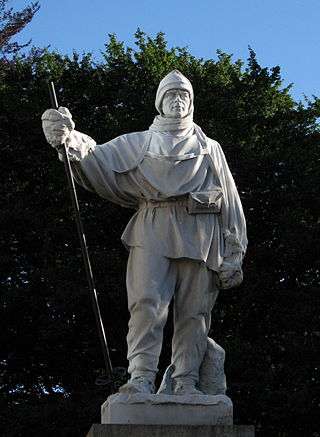
The Statue of Robert Falcon Scott commemorates Antarctic explorer Robert Falcon Scott. It is located at the intersection of Oxford Terrace and Worcester Street in the Christchurch Central City, New Zealand. The statue, carved by Scott's widow Kathleen Scott, is registered as a Category II historic place. The statue toppled off its plinth in the February 2011 Christchurch earthquake and broke in two; it was temporarily on display in the Christchurch Earthquake Museum in City Mall. The Scott statue was reinstated in October 2017.
References
- ↑ "ISCE Expedition info". 2010. Archived from the original on August 25, 2010. Retrieved Sep 22, 2010.